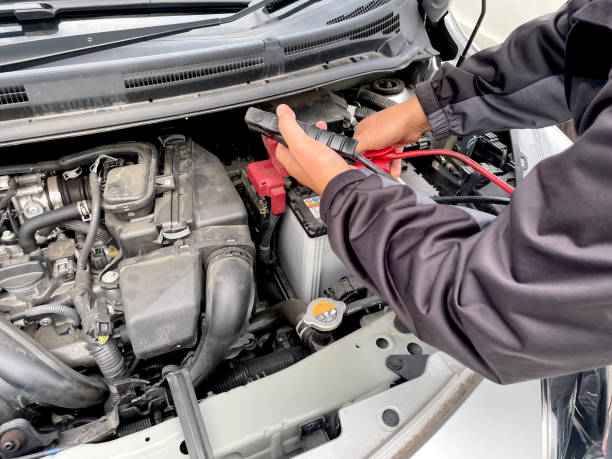
How Are Electric Vehicle Battery Swapping Solutions Transforming Mobility in India?
Share
Electric Vehicle (EV) Battery Swapping Market is emerging as a game‑changer—offering drivers the ability to exchange a depleted battery for a fully charged one in minutes, rather than wait hours at a charger. In India’s booming two‑ and three‑wheeler markets, swapping stations promise reduced downtime, lower vehicle costs, and rapid scale‑up of zero‑emission fleets.
1. What Is Battery Swapping and How Does It Work?
Battery swapping decouples the battery from the vehicle, enabling a quick exchange rather than a stationary recharge.
Battery swapping decouples the battery from the vehicle, allowing riders to pull into an automated kiosk, dock their depleted pack, and receive a fully charged one—typically in under five minutes—without waiting at a charger. The station’s robotic bay ejects the empty battery, places it on recharge, and immediately delivers a ready‑to‑use pack, effectively turning “refuelling” into a rapid, seamless exchange. This model slashes vehicle downtime to near zero and is particularly advantageous for high‑frequency two‑ and three‑wheeler fleets that rely on continual operation for their livelihoods.
Summary: Swapping turns “refuelling” into a sub‑five‑minute process, slashing vehicle idle time and improving utilization for high‑frequency EV users.
2. How Are Commercial Fleets Embracing Swapping Networks?
According to the Economic Times Report, Fast‑moving delivery and ride‑hailing fleets are ideal early adopters.
- Network Scale: Battery Smart operates 1,400+ swapping sites across 40 cities; Sun Mobility runs 800 sites in partnership with Indian Oil Corporation.
- Fleet Focus: Commercial rickshaw and scooter drivers value sub‑5-minute swaps to avoid lost earnings.
- Growth Projections: Government reports estimate 26,000 swapping kiosks needed by March 2026, and 111,000 by FY 2030—up from 2,600 today.
Summary: Commercial drivers are driving demand—prioritizing uptime over battery ownership—fuelling aggressive roll‑out plans.
3. How Are Public Transport Hubs Integrating Swapping Facilities?
India is piloting swapping at metro and monorail stations to serve last‑mile commuters.
Public transport hubs are embedding battery‑swap stations directly into their infrastructure to streamline last‑mile connectivity for commuters and delivery riders. In Mumbai, the Metro and Monorail network is rolling out “E: swap” kiosks at 31 stations (25 metro and 6 monorail), where users can exchange depleted packs in under two minutes—generating approximately ₹ 30 lakh in non‑fare revenue per station annually. Meanwhile, Southern Railway in Chennai is installing EV charging bays at 28 railway stations and has invited bids to deploy dedicated swapping counters at 11 major stations—including Thiruvanmiyur, Egmore, and Velachery—enabling seamless transfers between trains and two‑ or three‑wheeler EVs without detours to offsite swap points. This integration leverages high footfall locations to maximize accessibility and utilization of swapping services.
Summary: Embedding swapping in mass‑transit nodes streamlines first/last‑mile connectivity for two‑ and three‑wheelers.
4. What Challenges Hinder Standardization and Scale‑Up?
According to the Economic Times Report, despite momentum, several roadblocks remain:
- Lack of Interoperability: No unified vehicle‑battery standard prevents cross‑network swapping.
- Funding Gaps: High upfront kiosk costs demand > $1 billion in recent raises—but many players still struggle to secure capital.
- Policy Uncertainty: Subsidy frameworks for swapping vs. charging remain undefined, delaying large deployers like Gogoro.
- Fast‑Charging Competition: Breakthrough four‑wheeler fast‑charge tech (5-minute full battery) may reduce swapping attractiveness for passenger cars.
Summary: Standardization, financing, and clear policies are critical to sustain today’s pilot‑scale deployments into a national network.
Next Steps: 5 Actionable Takeaways
- Define Battery Standards: Collaborate with OEMs to establish a uniform pack design, unlocking network interoperability.
- Secure Mixed Funding: Combine public grants with private equity to underwrite initial kiosk roll‑outs in tier‑1 and tier‑2 cities.
- Pilot at Transit Hubs: Expand metro/railway station pilots to other major urban centers, leveraging footfall for rapid scaling.
- Integrate Swap + Charge: Offer dual swap/charge bays to serve both commercial drivers and private EV users.
- Advocate Policy Clarity: Engage regulators to include swapping under EV incentives, matching support for fast‑charging infrastructure.
By investing in interoperable standards, diversified financing, and integrated hub deployments, India can unlock the full potential of battery swapping—delivering near‑instant “refuelling” that keeps commercial fleets rolling, urban transport seamless, and the nation on track toward its clean‑mobility goals.